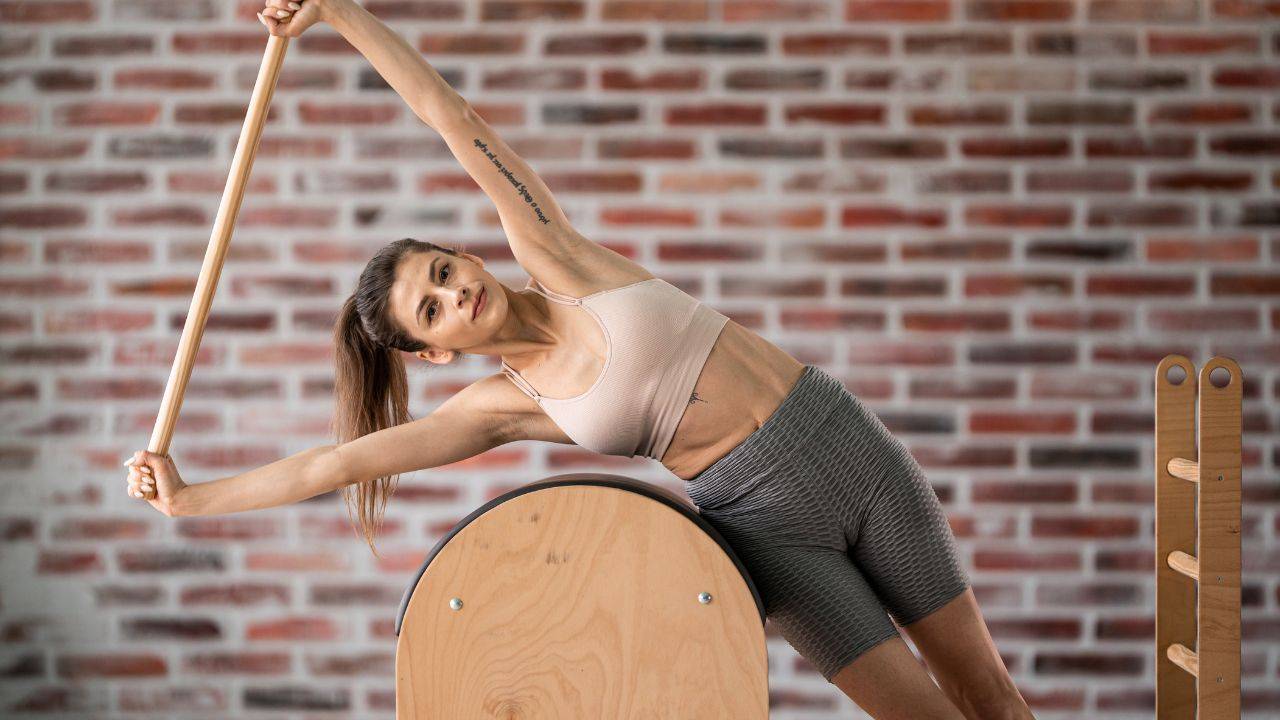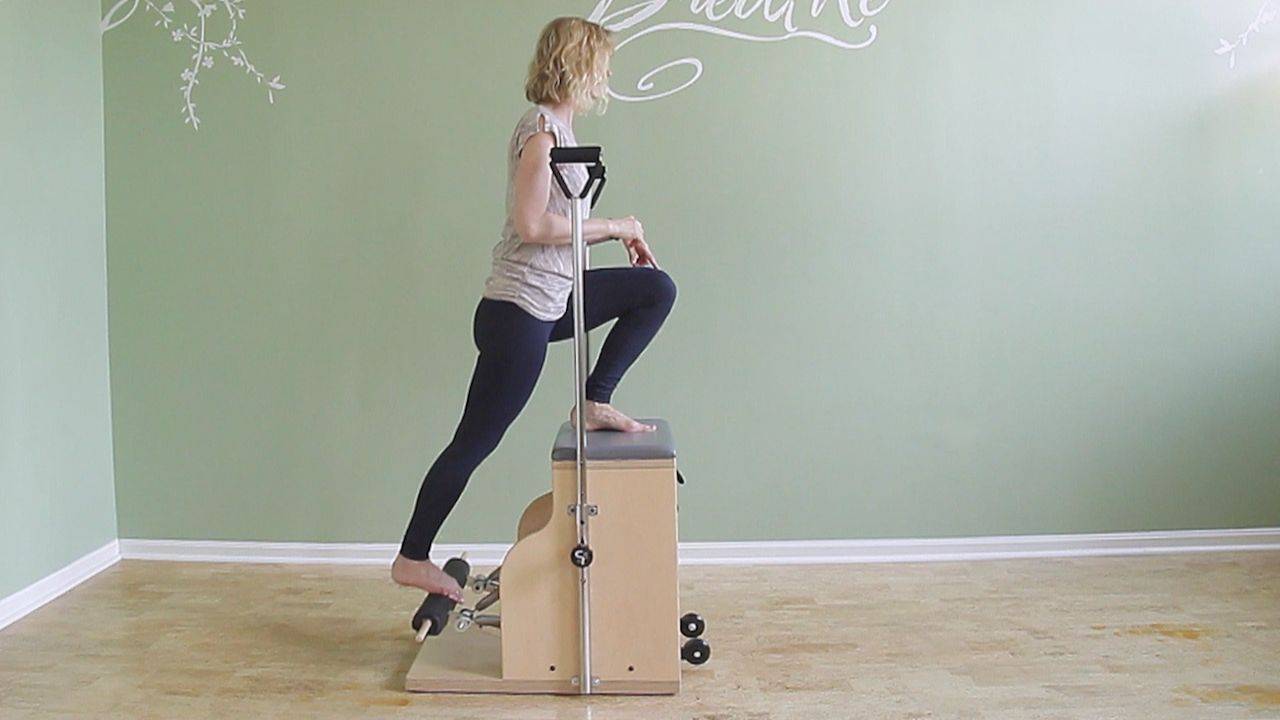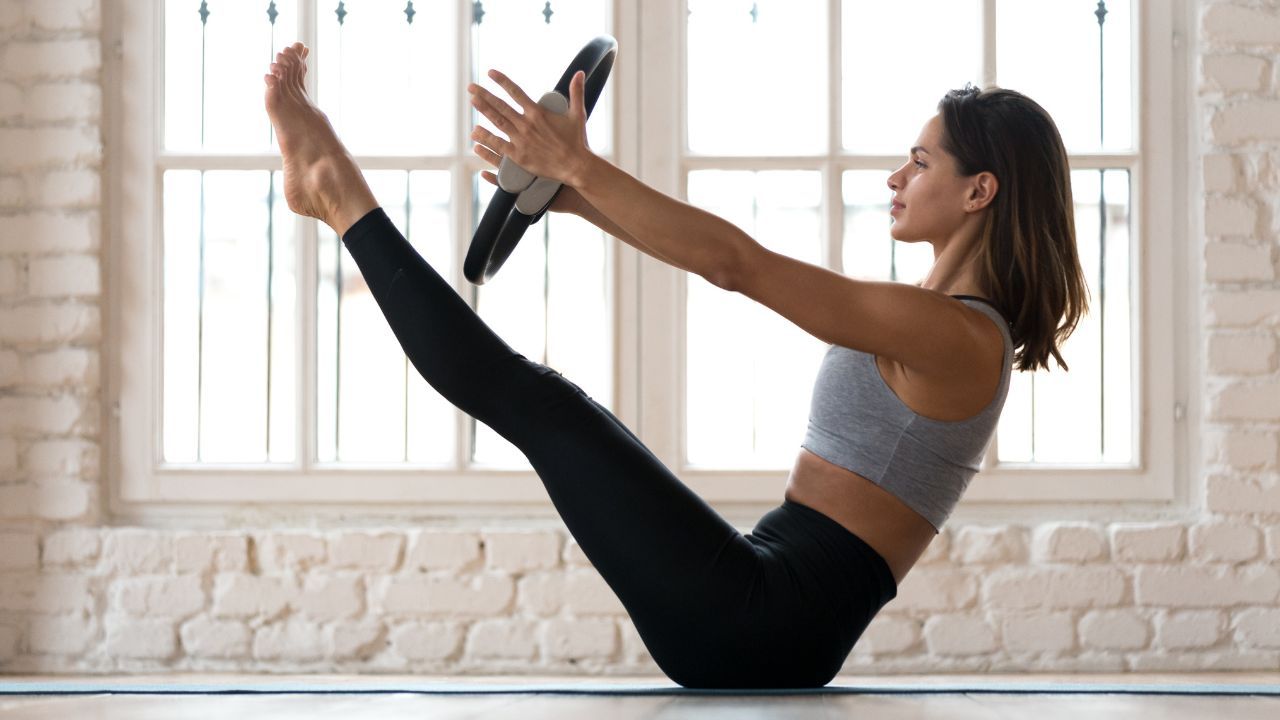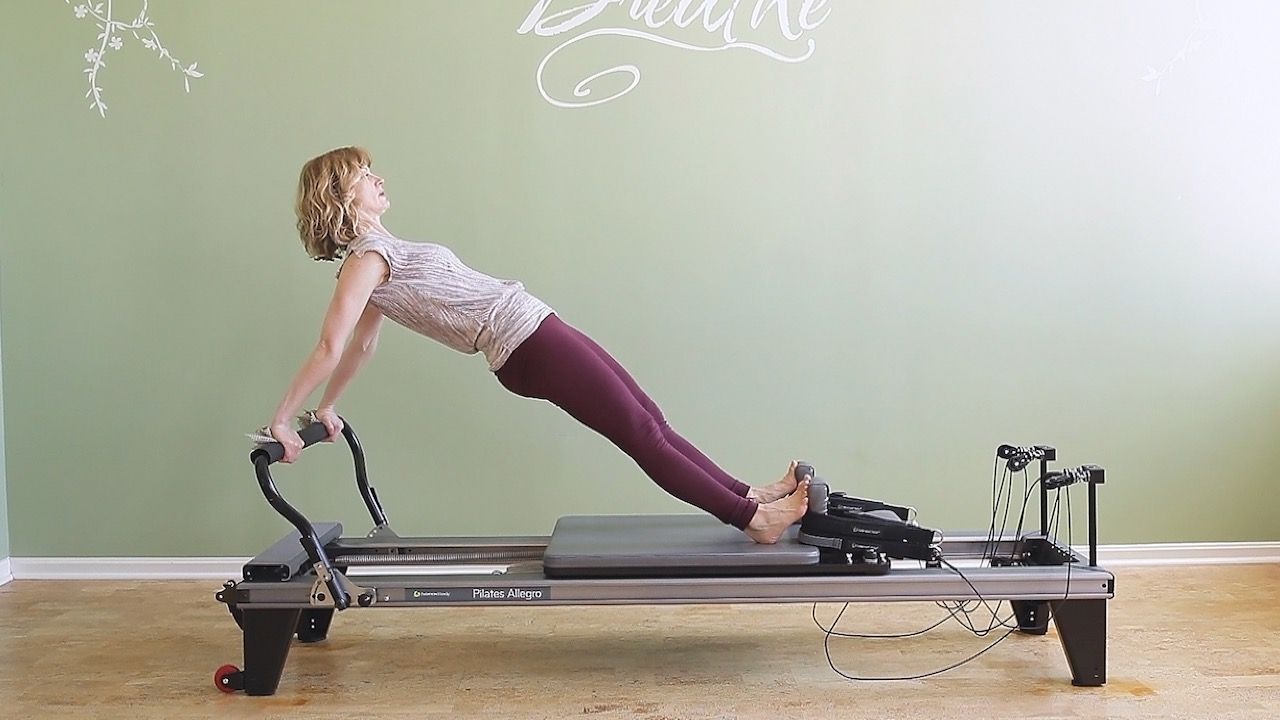Pilates bought Jill back from a cervical spine fracture and fusion | Studio Spotlight
Mar 24, 2018
While I was in Massachusetts for a fantastic workshop on adapting Pilates exercises for students with Scoliosis, I took a private lesson with Jill Hathaway, owner of Amherst Pilates. Jill’s story of how she got started with Pilates was incredibly touching. More than 10 years ago she had a cycling accident in which she fell hard on her head and even cracked her helmet.

She immediately went to the hospital, but x-rays there didn’t show a fracture. The injury stabilized itself via scar tissue and muscle adhesions but - she found out later - was still an accident bound to happen. Months later she jerked her neck during a somersault, being the athlete and all. Following that, she started to experienced several symptoms that after lots of searching finally showed a fracture in her cervical spine. The necessary spinal fusion of C1 and C2 luckily took care of her symptoms and gave her a chance to get back to an athletic lifestyle, which is something that she very much identifies with. “It’s what I need to be happy. Being an athlete is who I am. I felt I would lose part of my identity if I couldn’t go back to my sports.”
As part of her recovery, she tried several different methods of exercise, but most of them caused setbacks and flare ups in her neck. Then she stumbled upon a Pilates mat class, which she didn’t particularly like in the very beginning. It seemed way too easy to be effective. But it didn’t cause the injured area to flare up again, so she continued and eventually realized the power of the method. This turned into a more consistent practice and eventually a comprehensive teacher training program. She has owned her studio now for 10 years.
Right after entering her studio, I was thrilled to see she had an Arm Chair. I’ve never used one before and I was looking forward to trying it. The day of our session was Day 12 after my surgery, so I asked not to do too much upper extremity and neck work, and possibly focus on lower body, glutes and inner thigh strength. Nevertheless, we decided to try “Offering” and “Serve a Tray” on the Arm Chair which I’m familiar with on the Reformer. It’s honestly not an exercise I practice nor teach very often, because it’s very difficult for me (not to say impossible; especially when I don’t have anyone watching my form) to control what’s going on between my shoulder blades. The back of the Arm Chair gave me the feedback I needed and I was able to control my shoulder blades much better than on the Reformer. I liked it. Her athletic background is obvious in Jill’s teaching. Her approach is definitely one of “we’re here to work your body”. I enjoyed it very much. Her pace is a bit faster than I usually choose, but that was good to get me out of my rut comfort zone.
We also did two different leg exercises using the Arm Chair, which I think I might be able to mimic using the Trapeze Table and the vertical slider bar. One was a straight leg raise in extension and one into abduction. Both worked my glutes really well. I noticed that my right leg is significantly stronger than my left. Good to know. I’ve listed the other exercises and variations we did in the session below.
Jill’s studio consists of one room with two Reformers, one Trapeze Table, two Chairs, one Ladder Barrel, and lots of props. Her schedule is at capacity, meaning she is fully booked with a wait list. She doesn’t need to advertise and she receives most of her clients through word of mouth. She likes it that way. It allows her to have a supportive atmosphere at the studio, especially in her small group classes. Most of her students practice twice per week. Most of them take one private or semi-private session and one mat class per week. She is very protective of the atmosphere and spirit in her small group classes, and fills open spots in her classes by invitation only.
My visit coincided with Jill’s 50th birthday and her students threw her a surprise birthday party. Her youngest student is 16, who’s in a wheelchair, her oldest 91. I think that answers the question we get a lot: “Is Pilates right for me?” If you fit anywhere in that range, we’ve got you covered.

One of the most beautiful aspects about a small studio like Jill’s is the personal connection between student and teacher, and among students. Learning Pilates can be a humbling experience. The teacher always looks for which body part is not working the way it should and chooses exercises to improve that. Students can feel criticized and judged, not by the teacher, but aren’t we all harder on ourselves than others could ever be? Having a teacher who we can trust fully, is a huge part of the success of the method.
Here are a few more take-aways:
- We need a better way to explain Pilates to people who’ve never done it before, such as walk-ins.
- Refer to other studios. If we’re fully booked and have no room on our schedules to take on new clients, let’s refer them to other studios in our area. Ultimately we should spread the word about Pilates. What goes around comes around.
- We need more well-trained instructors. This was the reason Jill gave me for keeping her studio small.
- Try to better communicate to students the need for two weekly sessions. Once is really not enough.
- Variety is the spice of life. Having a set program with no variety can get stale and boring for students and teachers. I learned so many new variations from Jill, all of which are absolutely and totally Pilates. She taught movements on different planes that are not part of my usual repertoire.
- (Most) Pilates instructors don’t want to be business managers. We need to find a way to keep admin work to a minimum so that we continue to enjoy our work. I recently also heard in one of the minimalists podcasts about the importance of bringing the hobby back into our profession.
- Pilates is an individualized practice. Jill and I agreed. We saw a challenge in making the general population understand that Pilates can be a healing form of exercise, but group classes might not achieve that due to the lack of focus on each individual’s unique body.
- Make the most out of your space. Jill holds mat classes in her space by pushing her Trapeze Table, Arm Chair, and Ladder Barrel - that are sitting on felt - aside and creating room for 8 mats. Instead of spending more money on rent, she makes the most of the space she has with a few small adjustments. She doesn’t have any admin staff, she does it all herself. She has one other teacher teaching at the studio, but not at the same time as her.
Exercise List
(in the order that I remembered them, not the order we did them in):
- T - Pull Ups standing on table with feet resting; using legs as much as necessary but as little as possible
- T - Single Leg Squats (Pistol squats) holding on to top horizontal poles
- On Anatomical Roller:
- Quadruped with one shin lengthwise on roller with single leg reach or opposite arm and leg reach
- Supine; single leg table top; opposite arm reach; I was very wobbly on transverse plane
- Glut massage and spine massage on Rollga
- R - Footwork (4 springs): wide V, point and flex, running, single leg parallel (great quad work)
- R - Feet in Straps (2R): lower+lift, circles in internal rotation, frogs, frog circles, Bend and stretch circles both direction
- R - Feet in Straps (R): with Magic Circle between ankles; lower and lift
- R - Knee Stretch Down Stretch flow (RB): start in Knee Stretch Position, push back with arms (optional round back version), once in shoulder flexion, push knees back into inchworm position (torso almost parallel to floor), pull forward from arms with hips extended (down stretch position) and repeat
- R - Arm work facing back: Sit cross-legged, straps crossed external rotation of upper arms
- R - Stomach Massage with arc over shoulder rests: great stability for pelvis, no sliding back. makes stomach massage almost bearable.
- R - Scooter (kickback) RB
- R - Pulling Risers (closed chain), bend elbows (like pull ups)
- Arm Chair (LY or P-SY with handles): supine in front of arm chair, feet on edge of seat, handles in hands. Bridge up while pushing hands down.
- Arm chair: sitting in chair, hands in handles: offering (great feedback for upper back compared to Reformer), salute, punching
- Arm Chair (P): standing side leg springs - abduction (can try on trap table, hold on to poles, attach long purple to slider bar a few inches above table surface
- Arm Chair (P): straight leg raises in extension (body sideways to arm chair: extend leg back and lift a few inches, can pulse
Amherst Pilates
owner: Jill Hathaway
amherstpilates.com











